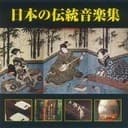Historical Roots and Cultural Significance in Japanese Tradition
The hirajoshi scale represents one of the core tuning systems in traditional Japanese music, with historical roots extending back to the Edo period (1603-1868) and earlier court music traditions. This pentatonic scale emerged from the sophisticated modal systems developed by Japanese court musicians and Buddhist monks, particularly in gagaku (imperial court music) and shakuhachi zen meditation practices. The name "hirajoshi" translates roughly to "flat tuning" or "level foundation," reflecting its stable, balanced character compared to other Japanese pentatonic scales like iwato and kumoi. Traditional instruments including the 13-string koto, shakuhachi bamboo flute, and shamisen three-string lute frequently employ hirajoshi tuning for both classical repertoire and folk music throughout Japan's diverse regional traditions. The scale's interval pattern (2-1-4-1-4 semitones) creates harmonic relationships fundamentally different from Western G Major or G Natural Minor, producing the instantly recognizable "Japanese sound" heard worldwide in film, anime, and traditional performances. Modern preservation efforts by Japanese cultural institutions ensure hirajoshi remains central to the nation's musical identity while contemporary artists incorporate it into anime soundtracks, video game music, world fusion projects, and meditation music that honors centuries-old traditions within modern contexts.
Distinctive Musical Character and Emotional Expression
G Hirajoshi delivers a contemplative, introspective sound characterized by its minor third (B♭) and flattened sixth (E♭), creating melancholic beauty without the darkness of Western minor scales. The large interval leap from A to D (a perfect fourth) produces the characteristic "gapped" quality typical of Japanese pentatonic scales, distinguishing it from smoother Western pentatonics and creating the space and aesthetic restraint central to Japanese musical philosophy. This intervallic structure naturally evokes images of zen gardens, cherry blossom viewing, traditional tea ceremonies, ancient temple grounds, and misty mountain landscapes—making it invaluable for film composers scoring Asian settings and establishing cultural atmosphere. The absence of semitone intervals (except the B♭ to A step) prevents Western leading-tone tension, allowing melodic phrases to float without gravitational pull toward harmonic resolution typical of European tonal music. Compared to the brighter G Yo scale or the darker, more dramatic G Iwato scale, G Hirajoshi occupies balanced emotional territory—wistful yet serene, nostalgic yet accessible. Musicians describe its quality as "quietly beautiful," "peacefully meditative," and "gently introspective"—perfect for meditation music, ambient compositions, wellness soundscapes, and moments requiring authentic Japanese cultural resonance without aggressive emotional expression or complex harmonic movement.
Practical Applications Across Modern Musical Contexts
Contemporary composers extensively use G Hirajoshi in anime soundtrack production, where its distinctive pentatonic structure instantly establishes Japanese cultural identity—Studio Ghibli films, acclaimed anime series, and Japanese cinema frequently feature hirajoshi-based melodic themes and harmonic frameworks. Video game composers working on titles set in feudal Japan or Asian-inspired fantasy worlds (including games like "Ghost of Tsushima," "Sekiro: Shadows Die Twice," and numerous JRPGs) rely on this scale for atmospheric authenticity that immediately communicates setting and cultural context. The meditation and wellness music industry extensively employs hirajoshi for its inherently calming pentatonic simplicity, creating peaceful soundscapes without dissonance or complex progressions that might disturb meditative states or relaxation. Jazz musicians exploring modal improvisation incorporate G Hirajoshi for exotic color and fresh melodic vocabulary, often contrasting it with G Blues or G Dorian sections in fusion compositions blending Eastern and Western traditions. Film and television composers rely on G Hirajoshi to instantly establish Japanese settings—a few notes immediately transport audiences to Tokyo, Kyoto, rural Japanese countryside, or traditional cultural contexts. Electronic music producers use hirajoshi in lo-fi hip-hop beats, chillwave, and ambient electronica, where its five-note structure provides melodic interest without harmonic complexity. The scale works effectively over sustained G minor or G power chord (G-D) drone tones, and guitarists appreciate how its pentatonic structure creates accessible, memorable riffs that sound authentically Japanese without requiring advanced technical knowledge of traditional performance practices or cultural theory.
Comparison to Related Japanese and Western Pentatonic Scales
Understanding G Hirajoshi's relationship to other Japanese scales clarifies its unique position within Asian music theory and practical applications. The G In scale shares contemplative qualities but employs different intervals and produces distinct melodic possibilities and traditional associations, while the G Iwato scale creates darker, more mysterious atmospheres suitable for different emotional contexts and dramatic situations in film scoring and theatrical music. The G Kumoi scale offers another Japanese pentatonic alternative with its own characteristic flavor and traditional performance practices developed over centuries. Comparing G Hirajoshi to Western pentatonics reveals fundamental structural and cultural differences: while G Minor Pentatonic (G-B♭-C-D-F) emphasizes blues-rock vocabulary and Western harmonic implications familiar to jazz and popular music, hirajoshi's A and E♭ create entirely different melodic possibilities and immediate cultural associations with Japanese music traditions. The major third interval from B♭ to D and the unusual E♭ to G leap produce the scale's signature Japanese character instantly recognizable across cultures. Musicians familiar with G Chromatic can extract hirajoshi notes to understand its selective five-note pitch collection chosen for specific sonic and cultural reasons refined over centuries. These comparisons help Western musicians internalize hirajoshi's logic, intervallic relationships, and melodic tendencies while respecting its cultural origins, historical context, and traditional performance aesthetics that differ fundamentally from European art music and American popular music traditions.
Learning Strategies and Practice Techniques for Musicians
Begin learning G Hirajoshi by slowly playing the five notes (G-A-B♭-D-E♭) while listening to traditional Japanese music featuring koto or shakuhachi performances—this contextual immersion dramatically accelerates authentic phrasing internalization, ornamentation techniques, and stylistic understanding beyond mere technical note memorization. Practice ascending and descending patterns, emphasizing the characteristic interval leaps, particularly the perfect fourth from A to D that creates the scale's distinctive gapped quality and Japanese character that distinguishes it from Western pentatonic systems. Guitarists benefit from exploring hirajoshi in various fretboard positions, discovering how its pentatonic structure creates visually clear, memorable patterns accessible across different registers and playing positions. Keyboardists can observe the relationship to G minor harmony while noting crucial intervallic differences that produce the scale's distinctive Japanese quality. Improvise over a G minor drone or sustained G power chord, allowing the scale's notes to float without Western harmonic progression constraints or expected resolution patterns typical of European tonal music. Transcribe traditional Japanese folk melodies like "Sakura Sakura" (often performed in hirajoshi or related tunings) to understand authentic melodic phrasing, dynamics, articulation, rhythmic approaches, and the critical importance of silence (ma) in Japanese musical aesthetics. Compare G Hirajoshi directly with G Minor Pentatonic to hear precisely how substituting A and E♭ for C and F transforms cultural identity and emotional character while maintaining pentatonic simplicity. Compose minimalist pieces using only hirajoshi notes, experimenting with sparse textures, sustained tones, and negative space typical of Japanese compositional principles derived from zen aesthetic philosophy. Study contemporary applications in anime soundtracks (Studio Ghibli, Makoto Shinkai films), video games ("Ghost of Tsushima," "Sekiro," "Okami"), and world music fusion recordings to understand how hirajoshi successfully adapts to modern production contexts, electronic instrumentation, and contemporary harmonic frameworks while maintaining authentic character, cultural resonance, and traditional emotional integrity that honors centuries of Japanese musical practice.





